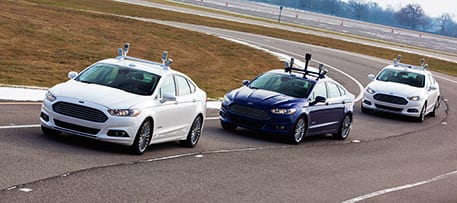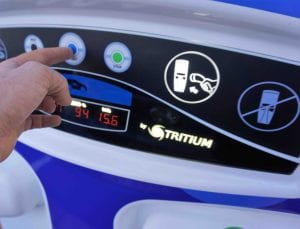Autonomous vehicles – or, self-driving cars as many people know them – look to be part of our driving future.
The benefits of this new mode of transport, particularly if adopted as shared transport could be many – more mobility options for non-drivers, less cars on the road, more efficient use of energy when driving, less need for car parks – to name a few.
With the majority of such vehicles being developed powered by an electric or hybrid drivechain, the question has been raised – and studied – as to whether these vehicles will in fact mean a decrease in carbon emissions overall.
As 95% of car travel by Australians could be in autonomous EVs by 2030, according to Sydney’s EnergyLab – this is a question worth considering.
“It’s not immediately obvious that autonomous vehicles are important clean energy technology,” EnergyLab’s James Tilbury tells RenewEconomy.
There are many factors at play, and not all related to the most immediately apparent reason, that possible fuel savings may be made due to more efficient driving by the car’s computer.
For example, there is the additional load of computing power and data transmission drawing extra electricity from the car’s battery.
Also to consider is the lifecycle of the added computing and sensing components themselves, such as cameras, LiDAR sensors, and GPS navigation systems.
One recent report looked at car components specific to AV technology, as published by the University of Michigan earlier this year.
This study looked at the tradeoffs between increased energy use and greenhouse gas emissions by CAVs (connected and autonomous vehicles), and the potential improvements in energy usage – considering factors such as power consumption, weight, drag, and data transmission.
The report also took into account possible improvements in efficiency due to eco-driving and ‘platooning’ (where AV cars travel together closely and safely for better aerodynamics).
Overall, their study was positive, citing a net result of a 9% reduction in the use of energy and greenhouse gas emissions.
Still, the impact of additional car components are not the only consideration.
Other reports and papers suggest that to what extent autonomous electric cars on our roads are adopted either personally, or under a shared “transport-as-a-service” (TaaS) model also has significant bearing.
This is both in regard to the energy embodied in the manufacture of such vehicles and also the increased (or net decreased) emissions from the use of autonomous shared transport.
One study by the The National Renewable Energy Laboratory, a part of the US Department of Energy, undertook to assess some of the advantages, effects and impacts of widespread implementation of autonomous EVs.
It suggested at the time (some 5 years ago now) that while fuel savings could be up to 90%, there could be increased energy impacts of up to 250% in a scenario where more and more people took advantage of the self-driving transport options.
Five years on and figures from the US Energy Information Administration (EIA) still suggest that the adoption of autonomous vehicles could lead to more energy consumption due to increased use of transport – for example by those hitherto dependent on other humans to get from A to B such as children and the elderly.
A report released late last month week by the World Economic Forum (WEF) also supports this.
In a three-year collaboration with the City of Boston it was shown that while the numbers of cars on roads would decrease by 15% and travel time would improve by 4% on average, actual travel miles as a result of the introduction of shared AVs would be increased by 16%, with more congestion in CBD areas.
What would this look like in Australia?
“TaaS might be so cheap that in certain circumstances people stop using personal transport, particularly in urban areas,” says Tilbury.
He also admits, however, an uptake of shared AVs could result in worse traffic in some areas.
“But on the other hand if autonomous vehicles induce so much traffic we end up with even worse traffic conditions, in CBD areas in particular, people could use public transport,” he adds.
Because the cost of autonomous electric transport could be as low as 50c/km, it would indeed make it a more affordable, attractive transport option for most people than maintaining their old internal combustion engine vehicles.
For as long as autonomous AVs are powered by coal-generated electricity – and this will continue to be the case in Australia for the foreseeable future – can we really consider this new mode of transport a clean alternative?
As a cheaper alternative, widespread uptake of shared autonomous EVs could drive a complete transition to renewable energy, and for this reason, Tilbury says the long view must be taken.
“For us, the key question is whether the technology will help society get to a point where 100% of our energy needs are coming from clean, renewable sources. Electric vehicles definitely fall into that category for us because their storage and flexible demand capacity will make it easier to accommodate increasing levels of intermittent renewable energy generation,” he says.
It is for this very reason – because a shared autonomous future mobility can be a potential accelerator of EV uptake – that AVs can be considered cleantech too.










